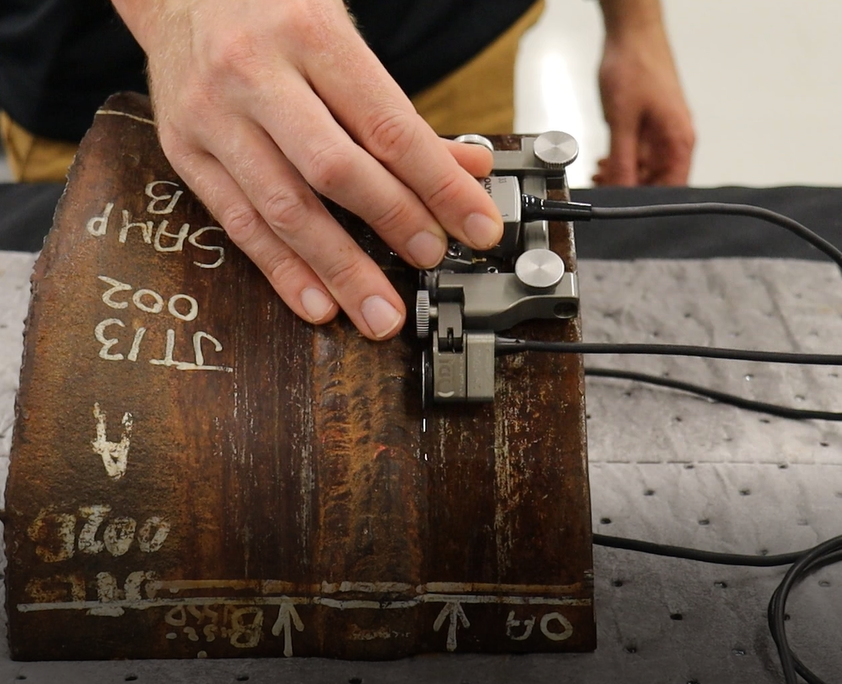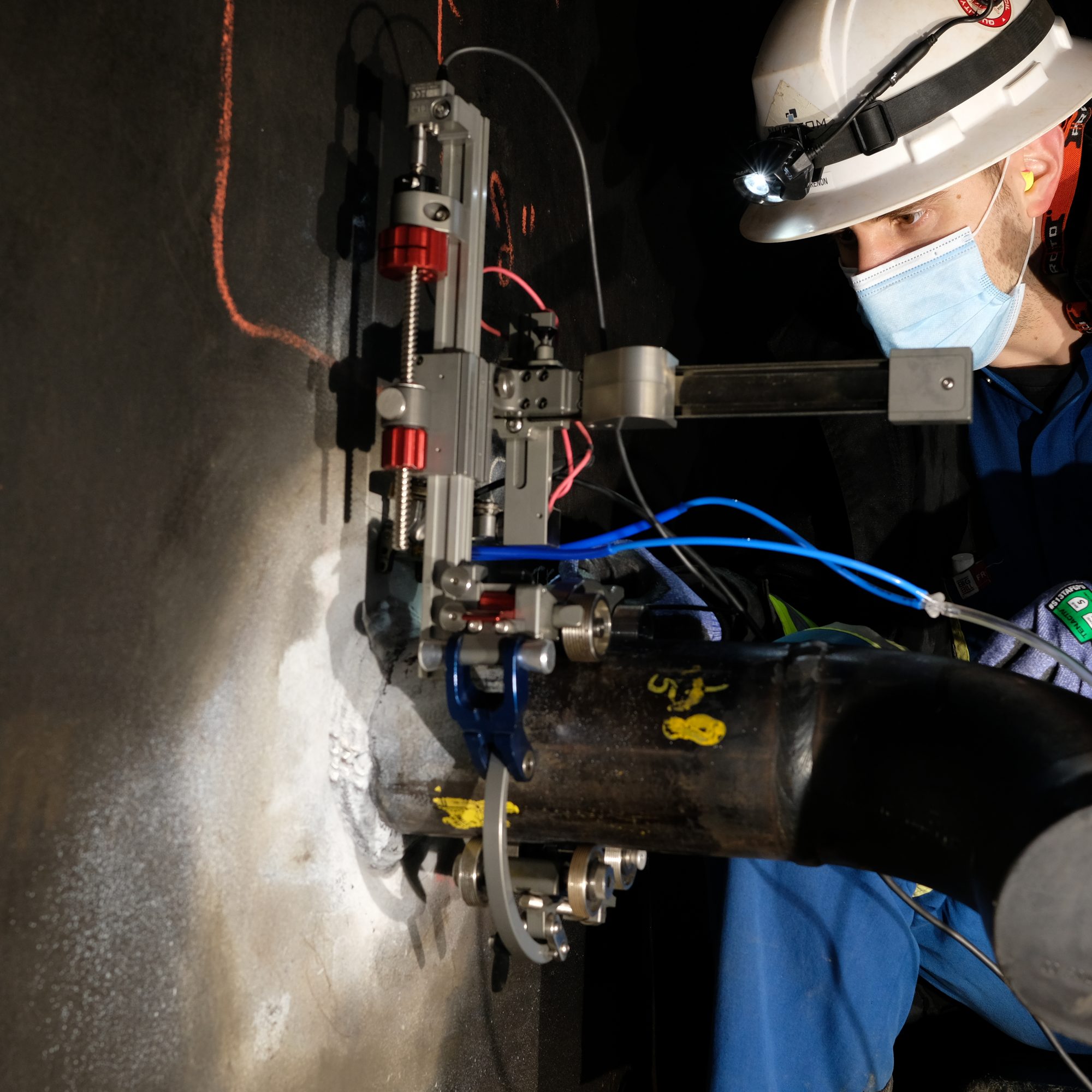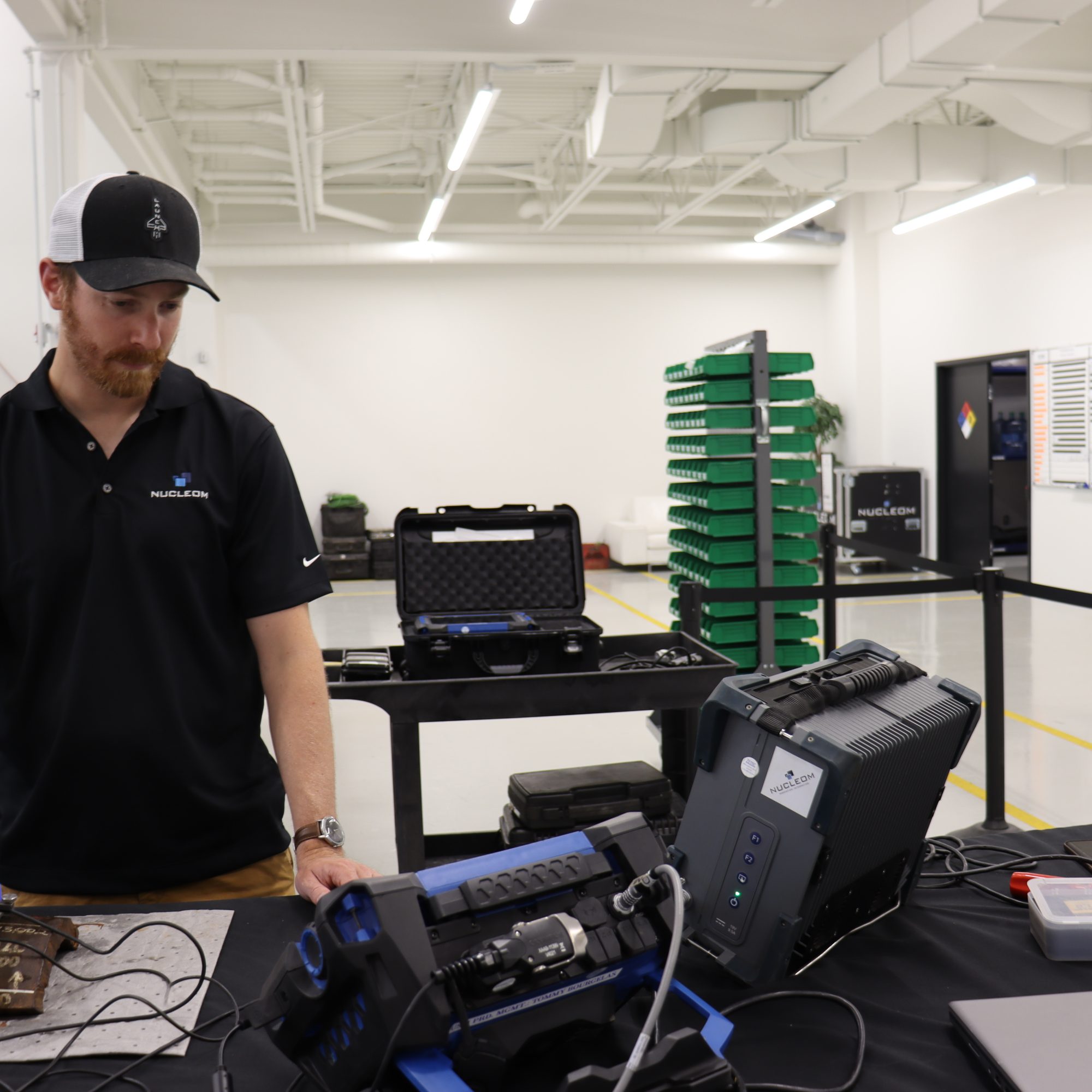HTHA occurs mainly in the oil and gas industry. It affects carbon and low alloy steels, often in hydrogen reactors, pipes and pressure vessels. HTHA inspection is important in the prevention of risks associated with surface decarburization, cracks, and fissures.
HTHA stands for High Temperature Hydrogen Attack or Hot Hydrogen Attack. Nucleom offers HTHA inspections using a combination of techniques. Detection difficulties due to the small size of methane voids (<0.1 mm) and poor interpretation of results from other reflectors such as inclusions are great challenges to NDT service companies. To that end, in addition to all the most advanced techniques widely used in the industry, Nucleom now offers a new HTHA inspection method resulting from several years of research to detect HTHA degradation and present failure risks. This new HTHA inspection method has been developed by Frédéric Dupont-Marillia, PhD (R&D Project Manager at Nucleom), Joe Krynicki (EXXONMOBIL) and Pierre Belanger (PULETS). scientific paper
The HTHA phenomenon
The HTHA phenomenon occurs in every asset that works with hydrogen and at high temperature. When hydrogen evolves at high temperature, it is absorbed by metals. It diffuses through the metal and can become trapped within the microstructure. The hydrogen then combines with carbides (decarburisation of the steel), producing methane. The methane bubbles tend to grow larger over time, eventually creating cracks. The progressive degradation of the structure follows several phases (stage) :
- Stage 1: voids with an individual size of less than 50 μm
- Stage 2: microcracks: 50-100 μm
- Stage 3: macro cracks: 100-500 μm
- Stage 4: macro-cracks larger than 450-500 μm
Stage 1 is currently impossible to detect using conventional ultrasound techniques. Our advanced method enables HTHA degradation to be detected at stage 2, i.e. early detection using a combination of techniques. This is currently the most advanced level of detection on the market.
HTHA inspection using conventional methods
Similarities in signal response between HTHA patterns and microstructural features have been challenges faced by NDT companies. As a result, conventional HTHA inspections are completed using the combination of techniques listed below to enhance the PoD (Probability of Detection).
- Time of Flight Diffraction (TOFD): Sensitive technique for weld inspections Learn more
- Phased Array Ultrasonic Testing (PAUT): Interpretation facilitated Learn more
- Total Focusing Method (TFM): Elimination of multiple configurations, compared to PAUT Learn more
- TULA: TOFD Ultra Low Angle to combine TODF and backscatter
- S-Matrix (Scattering Matrix)
In addition to detection sensitivity, differentiating between inclusions and HTHA has always been a major issue for a successful HTHA inspection. The team has successfully completed Lavender‘s HTHA detection and sizing course for UT technicians. In order to improve diagnostic confidence, Nucleom has been working on an enhanced version of HTHA inspection.

Nucleom’s Advanced HTHA Inspection Solution
Our advanced solution is based on the principle that most of the imaging process is the result of multiple averaging processes that decreases the sensitivity of the inspection for small reflectors, such as HTHA. Our approach combines advanced imaging that enhances TFM performance by selecting coherent information. Then, when a suspicious area is identified, S-Matrix is locally applied to confirm the presence of HTHA.
Nucleom’s methodology is as below:
- VCF/DMAS
- Amplitude free TFM/PCI
- Scattering Matrix
Nucleom’s solution is fully operational and is based on the highest standards in the industry as well as a new type of scattering matrix to validate the information obtained.

Research and Development
Nucleom’s cutting-edge R&D, conducted in partnership with public research, contributes into establishing the new standard in the NDT industry. As our mission statement says, Nucleom drives change by generating new ideas and inspection solutions for environmental and public safety.
To know more about this innovative inspection method, take a look at the latest scientific paper.

 Are you facing inspection challenges?
Are you facing inspection challenges?
Our team of specialists is here to assist you. Discover how our services can effectively and professionally address your inspection needs.